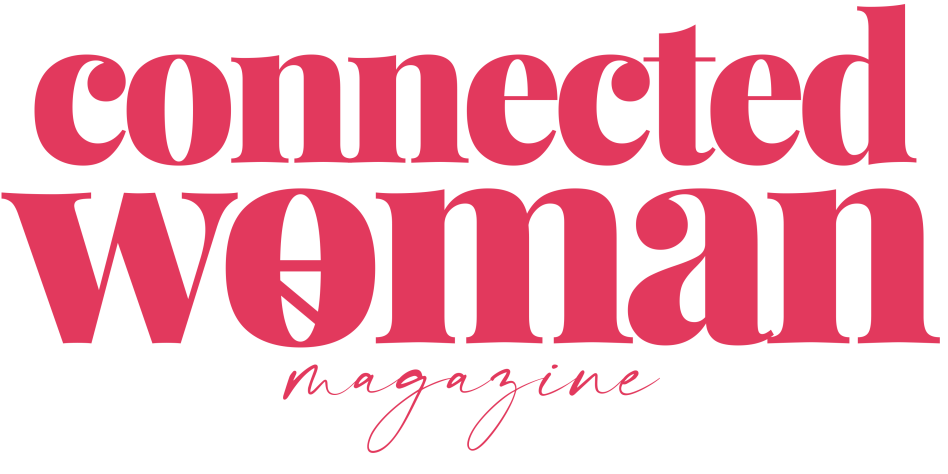 CWM recently did a short Q & A with Delmar Johnson all about HR Basics. Check it out!
CWM recently did a short Q & A with Delmar Johnson all about HR Basics. Check it out!
How would you describe the workplace for women in 2014?
I would describe the workplace for women in 2014 as very promising, yet there is still room for more. Women today make up about half the American workforce, which is without a question a big leap from the 60’s when they constituted about a third. But, even today for example, only 23 Fortune 500 companies have CEOs who are women. Average wages from that era, (the 1960’s) a woman in the United States made 59 cents for every dollar a man made. Today, women have made good gains, but on average they make 77 cents for every dollar a male counterpart makes.
The most startling data on women in the workplace I’ve come across, came from a study just out from two think tanks – the Center for American Progress and the Center for Economic and Policy Research. It turns out that the most important economic trend of the last 30 years might not be high tech, but rather high employment of women. If women hadn’t entered the workforce – by the millions over the last three decades, the study says, the U.S. economy would be about 11 percent smaller.
The report, which was partially funded by the Department of Labor, found that if women worked at 1979 levels, the U.S. economy would have lost over $1.7 trillion in economic output in 2012. That amount – $1.7 trillion dollars – is roughly the GDP of Canada.
Do you see an increase in women making their own way and starting businesses?
Yes, very much so. Women are starting their own businesses every day and today women own approximately 30% of small businesses established. No longer are women allowing themselves to be conditioned to work within traditional confinements of making a living.
According to the latest U.S. Census Bureau statistics, which are compiled every five years, there were 7.8 million women-owned firms in 2007 (SBA.gov) – 90 percent of which were small businesses.
In the decade from 1997 to 2007, women-owned companies grew at twice the rate (44 percent versus 22 percent) of male-owned enterprises, showed a 2010 report prepared by the Economics and Statistics Administration.
Despite all the progress, women-run businesses still lag their male counterparts in revenues, number of employees and funding. Men are twice as likely as women to own a business that brings in $1 million in revenues (6 percent versus 3 percent), according to a 2009 survey of 417 women-owned small businesses by the Center for Women’s Business Research. The study also found women-owned firms generated just 4 percent of all U.S. business-related revenues. One of the main reasons for this can be that women tend to start service-related companies that have a harder time attracting the funding needed to grow into larger businesses.
What do you see as the biggest obstacle for women at work…whether as a manager in retail or a VP at a leading Fortune 500 company?
I think the biggest obstacle for women in the work place is still the “prove that you can do it better than a man” way of thinking. Let’s face it women and men are different in all the obvious ways; however, that does not diminish the intelligence and know-how of women in the workplace and the importance of that being recognized just as much, if not more, then our counterparts on the job.
Women have caught up with men in terms of education. In fact, in the United States and a number of other countries, women now actually surpass men in educational achievement.
So there is not a problem with female achievement and education. The problem enters in when women try to balance work and family, and end up carrying nearly all of the care giving responsibilities.
The traditional theory about workplace inequality focuses more on the areas of childbearing, maternity leave, and child care, holding women back. Then there are the deeply ingrained biases that setup the game in favor of men. In the book Lean In, Sandberg’s most interesting observations is that women and men work and collaborate differently, causing variations in career outcomes. These obstacles can be overcome, but doing so will require great effort.
What do you think about recent media concerning equal pay for women doing the same jobs as men?
I think the unequal treatment of women in the workplace is not a natural occurrence? Instead, inequality in opportunity, status, pay, and external arrangements that produce inequality are all evidence of a social strategy that pays off for men at women’s expense.
So many working women today continue to have at least two jobs—one in the workplace and one at home. Childcare is very expensive in the United States, and we are seen as way behind in terms of offering affordable, high-quality care in comparison to many European and Asian countries. Although, the contribution of men to housework and childcare has grown significantly over the past 20 to 30 years, fathers have by no means caught up to mothers in terms of time spent caring for children and doing household chores, but there has been some shift in how they divide their time between work and home.
Furthermore, it is said that the gender wage gap in the United States is lower than in many other countries. But what is troubling is that the gap has barely narrowed since the mid-1990s. According to the Institute for Women’s Policy Institute, the gender wage gap is projected to close in the year 2058, which lends to say most women working today will not see equal pay during their working lives.
What would be an across the board recommendation for a woman recovering her career after layoff and a stay at home mother returning to the workforce? What would be your first question to them before assessing their needs?
A1. I offer the following 5-point recommendation to “career recovery” across the board from the stay-at-home to career transitioning women.
Get clear about who you are. Starting over or transitioning is the perfect time to reassess who are you are, what drives you, what fulfills you, what energizes you and what you do that provides the most satisfaction. This first step should be taken fully consciously and not rushed. When you give yourself the time and space to do it, you will probably be amazed by what comes to surface.
Take stock of what it is you have and own it. Grab your laptop, iPad, or simply a pen and paper and begin to identify what your talents, skills and abilities are. Take the time to actually write these down. Do you know what you have and can do? What better time than now to pinpoint what they are! When you aren’t quite sure about what you can offer, how will you ever be able to convey to a potential employer that you have what it takes? For example, stay-at-home moms have several skills and abilities that can easily translate into the market place – organizational skills, negotiation skills, disciplinary skills, budgeting and planning skills, and that’s just to name a few. Think about your previous career skills and the skills that were required in raising a family, and put those down on paper.
Identify what your career interests are now. The career interests you had 5, 10 or 20 years ago are not likely to be the same now. Technology alone has transformed the employment market, and it’s important that you research the changes. Define how you must align yourself to be competitive and identify the steps you need to take to be ready and noticed.
Let your circle of influence know you’re ready to get back into the market. It’s important to let your trusted circle know you are preparing yourself to get back out into the market for a new career. Let them know what you’re looking for and the type of industry you desire. Ask if they are open to making personal introductions to people they know who are connected with the types of employers and career environments you want to be in.
Network, Network, Network. Most of the best jobs in the market won’t be found on the internet–they’re found in a networking environment. However, networking should be done strategically. There are meetups everyday and everywhere, but not every one of them is conducive to what you want and need. Be deliberate in choosing networking environments that could potentially have decision-makers in the room. For example, try greater chamber of commerce meetups, targeted business organizations like NAWBO (National Association of Women Business Owners) or industry-specific meetups like SHRM (Society of Human Resources Management). These are just a few examples to get you thinking–find the one that works for you.
A2. My first question to women recovering from a layoff or a stay at home mom returning to the workforce is “What do you see yourself doing now?” It is a time of rediscovery and an opportunity to be open to new opportunities.
I hate my job! I hear this more and more lately. Why do you think so many women are so disenchanted in their current careers?
I believe many women are disenchanted in their current careers, because what they are doing doesn’t line up with who they really are at their core; this could be the result of many things from an unbalanced life, to family and foes, to the recession that had adverse effect on a multitude of people. And let’s not forget the wage gap that is still significantly different; although money is not everything, the gap doesn’t serve as the best motivator.
What are some common mistakes small businesses make when it comes to hiring staff?
Small business owners are great, but they do make some common mistakes when it comes to hiring. I hear all the time from small business owners they want nothing to do with HR; however, it is very much something any business that is in growth mode will take on, whether it’s the challenge of hiring their first or twentieth employee. Some of those common mistakes include:
• Not identifying their specific needs
• Undeveloped job descriptions
• Improper hiring documents
• Inconsistency in interviewing
• Not asking for help
Lastly, when small business owners continue to do everything in the DIY mode, the cost will be far greater in turnover, absenteeism and rehiring just to name few; than acquiring the right source of help in the beginning of the process.
What do you think is more important, the interview or the resume?
I believe the most important between the interview and the resume, is the interview. There is a very distinctive difference between the two. A resume a summary of past and current talents, skills and abilities is the tool used to create a visual of who are on paper and it serves as the vehicle that makes your phone ring. Whereas an interview is the very platform, whereby an employment candidate has the opportunity to present who they are face to face, what value they will bring to a potential employer and how relatable they are to the culture of the business. An interview allows the interviewer to get a more real sense of who the candidate is, his or her mannerisms and actions toward questions being asked. It allows for a more targeted conversation.
Thanks Delmar for being so informative! Reach out to her today for any of her services.
Delmar Johnson is an Author, Speaker, Coach & HR Consultant.For more information you may email her at info@delmarjohnson.com or visit her on the web at www.delmarjohnson.com. Purchase her book, Author of “Seasons of My Soul: A Life Journey Through Lessons Learned in a Dry Place” on Amazon.com here
